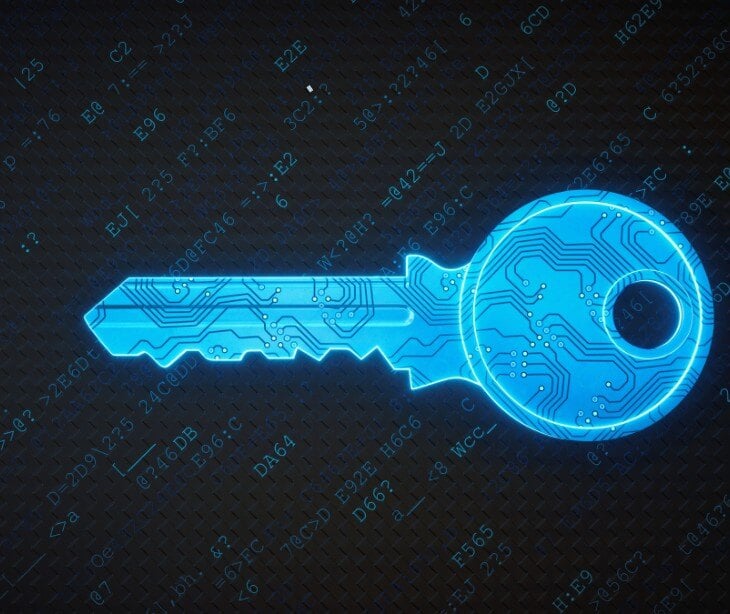
Cryptography is a fundamental component of modern information security, ensuring the confidentiality, integrity, and authenticity of data. It is widely used in various domains, including online banking, e-commerce, secure messaging, and data protection.
Understanding cryptography
Cryptography, derived from the Greek words "kryptos" and "graphein" meaning "hidden" and "writing" respectively, is the practice of secure communication in the presence of adversaries. It involves techniques for converting plaintext (readable data) into ciphertext (unreadable data) using cryptographic algorithms. The resulting ciphertext can then be transmitted over insecure channels without fear of unauthorized access.
Basic principles of cryptography
At its core, cryptography relies on three basic principles: confidentiality, integrity, and authenticity. Let's look at each of these principles in more detail:
- Confidentiality: Confidentiality ensures that only authorized individuals can access and read encrypted data. Encryption algorithms transform plaintext into ciphertext, making it unreadable to anyone without the corresponding decryption key.
- Integrity: Integrity ensures that data remains unaltered during transmission or storage. Cryptographic techniques, such as hash functions and digital signatures, help detect any unauthorized modifications to the data.
- Authenticity: Authenticity ensures that the sender and receiver can verify each other's identities and that the data comes from a trusted source. Digital signatures and public key infrastructure (PKI) are commonly used to establish authenticity.
Go deeper:
Symmetric cryptography
Symmetric cryptography, also known as secret key cryptography, is a class of cryptographic techniques that use a single shared key for both encryption and decryption. Both the sender and receiver use the same secret key to encrypt and decrypt the data.
One of the main advantages of symmetric cryptography is its efficiency and speed. However, key management becomes challenging when multiple parties must communicate securely.
Asymmetric cryptography
Asymmetric cryptography, also known as public key cryptography, is a cryptographic technique that uses a pair of mathematically related keys: a public key and a private key. The public key is freely distributed and used for encryption, while the private key is kept secret and used for decryption.
In asymmetric encryption, the sender encrypts the plaintext using the recipient's public key, and the recipient decrypts the ciphertext using their private key. This approach allows for secure communication without needing a shared secret key.
Read also: The role of cryptographic algorithms in encryption and decryption
Hash functions
Hash functions are cryptographic algorithms that transform an input (message) of any length into a fixed-size output known as a hash value or message digest. Hash functions have several important properties:
- One-way: It is computationally infeasible to derive the original message from the hash value.
- Deterministic: The same input will always produce the same hash value.
- Fast computation: Hash functions are efficient and can process large amounts of data quickly.
- Collision resistance: It is highly improbable that two different inputs will produce the same hash value.
Hash functions are commonly used for data integrity checks, password storage, and digital signatures.
Public key infrastructure
Public key infrastructure (PKI) is a set of policies, procedures, and technologies used to manage public key encryption and digital certificates. PKI provides a framework for secure communication, authentication, and data integrity.
In a PKI system, a trusted third party, known as a Certification Authority (CA), issues digital certificates that bind a public key to an identity. These certificates are used to verify the authenticity of public keys and establish secure communication channels.
PKI is used in various applications, including secure email, SSL/TLS encryption for web browsing, and secure remote access.
Secure communication protocols
Secure communication protocols ensure the secure exchange of data over networks. These protocols use cryptographic techniques to provide confidentiality, integrity, and authenticity.
One of the most widely used secure communication protocols is the secure sockets layer (SSL) and its successor, the transport layer security (TLS). SSL/TLS protocols enable secure communication between web browsers and servers, ensuring the confidentiality of sensitive information, such as passwords and credit card details.
Related:
Real-world applications of cryptography
Cryptography is a fundamental technology used in numerous real-world applications to ensure the security and privacy of sensitive data. Here are some examples of how cryptography is used in practice:
- E-commerce and online banking: Cryptography protects online transactions, ensuring the confidentiality and integrity of financial data and customer information.
- Data protection: Cryptography is used to encrypt sensitive data at rest, such as stored passwords, credit card information, and personal health records.
- Digital rights management: Cryptography is used to protect copyrighted content, such as movies, music, and software, from unauthorized access and distribution.
- Blockchain technology: Cryptography is a key component of blockchain technology, ensuring the security and immutability of digital transactions and smart contracts.
- Internet of things (IoT): Cryptography is used to secure communications and data exchange in IoT devices, protecting against unauthorized access and tampering.
- Secure communication: Cryptography is used to secure communication channels, such as secure messaging apps, virtual private networks (VPNs), and secure email protocols.
How are cryptographic algorithms used in healthcare communication?
A study titled Cryptography in the Healthcare Sector With Modernized Cyber Security states, "cryptography is an indispensable tool used to protect information in any organization, providing secure transmission over the Internet." The study discusses that data security is one of the healthcare sector's biggest challenges, and advancements in cryptographic methods are helping to address this issue by improving data protection.
In healthcare, cryptographic algorithms safeguard sensitive patient information in numerous ways. They secure the exchange of electronic health records between providers and protect telemedicine sessions, ensuring that video and audio interactions remain private. When electronic prescriptions are sent to pharmacies, cryptographic measures prevent tampering, reducing the risk of prescription fraud. These algorithms also support secure patient-doctor messaging platforms like HIPAA compliant email services. In medical research, cryptography anonymizes patient data, allowing researchers to study health trends without compromising privacy. Additionally, during emergencies, encrypted communication channels enable the swift and secure transmission of patient information from emergency sites to hospitals.
See also: HIPAA Compliant Email: The Definitive Guide
FAQs
How does cryptography protect data?
Cryptography protects data by transforming it into an unreadable form (ciphertext) using encryption algorithms. Only authorized parties with the corresponding decryption key can decrypt the ciphertext and retrieve the original plaintext.
Is cryptography only used for encryption?
No, cryptography is used for more than just encryption. It also ensures data integrity, authenticity, and non-repudiation through techniques such as hash functions and digital signatures.
What is the difference between symmetric and asymmetric encryption?
Symmetric encryption uses a single shared key for both encryption and decryption, while asymmetric encryption uses a pair of mathematically related keys: a public key for encryption and a private key for decryption.
Are there any vulnerabilities in cryptographic systems?
Cryptographic systems can have vulnerabilities due to weaknesses in the algorithms, implementation flaws, or insufficient key management practices. Ongoing research and analysis help identify and address these vulnerabilities.
Can cryptography be broken?
While no cryptographic system is entirely unbreakable, modern cryptographic algorithms are designed to be computationally infeasible and break within a reasonable timeframe. However, advances in technology and cryptanalysis techniques require regular updates and improvements to cryptographic systems.
Subscribe to Paubox Weekly
Every Friday we'll bring you the most important news from Paubox. Our aim is to make you smarter, faster.



